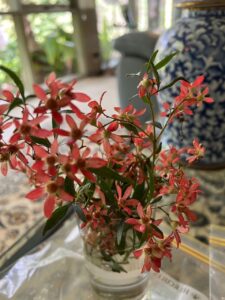Question From:
rad in st clair , sydney NSW
Nature of problem:
na
Type of Plant (if known):
solanum capsicoides
Symptoms of Plant Illness (please try NOT to diagnose your problems yourself):
na
Soil Type (e.g. sandy, clay or loam) OR Potting Mix Type:
na
How often do you water the plant:
na
How many hours of sunlight does the plant get each day:
na
What type of plant is it:
solanum capsicoides
How long since you planted it:
na
Have you fertilised? If so, with what and when:
na
Is the plant indoors or outdoors:
outdoors
Is the plant in a pot or in the ground:
ground
What other treatments have you given the plant:
na
Upload photo if available:
Other Comments:
Hi, just a quick question i want to graft eggplant onto solanum mamosum and solanum capsicoides rootstock,wich one of the two is more suitable will the eggplant become poisonous to eat? what are the advantages?any special care? can i graft chilli or tomato onto it? thank you
Answer: Hi Rad, Almost parts of all potato family plants (tomatoes, eggplants, chillies, potatoes, related weeds etc) are poisonous. Even the green skin of potatoes is poisonous. Grafting therefore does no harm to humans – the bits of these plants that we eat do not take up the poisons. I have no idea which weedy understocks are compatible with eggplant or tomatoes etc. I have been involved in commercial grafting of many species of plants such as japanese maples, camellias, citrus, grevilleas AND tomatoes. Tomatoes are usually grafted onto the very vigorous cocktail-sized fruiting varieties of tomato. The gains are a faster growth rate, greater cold hardiness, and better disease resistance. With incompatibility, rejection can occur as late as weeks, months or even years after grafting. After grafting, firmly tie the union together with budding tape which you can get from nurseries and hardware stores. I use changeable-blade medical scalpels to graft with.



